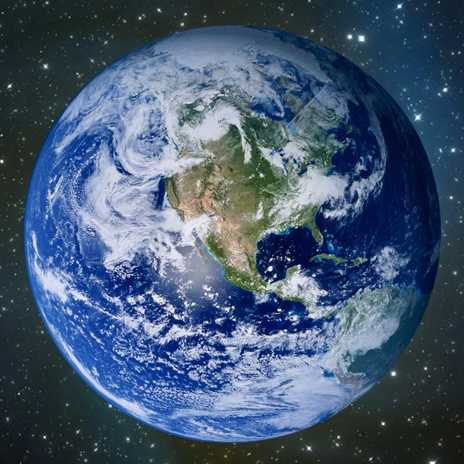EDIT: Submarine power transportation is indeed on the list
Not transoceanic, but there are two projects currently proposed that will – when constructed – break the current record for the “longest undersea power transmission cable” (a record currently held by the North Sea Link at 720 km, or 450 miles.)
One of these projects is the Xlinks Morocco-UK Power Project which aims to lay 3,800 km (2,400 miles) of cable and sell Morocco’s solar power to England.
There is, as of yet, not enough cable in the world to even begin this project. The company proposing the project is building factories to produce this cable.
The other is the Australia-Asia Power Link, which aims to provide Australian solar power to Singapore using a 4,500 km (2,800 miles) undersea cable.
Where the Xlinks project ran into a “not enough cable in the world” problem, Sun Cable’s AAPL has apparently been running into a “not enough money in the world” problem, as it has repeatedly gotten into trouble with its investors.
EDIT: But also, storage is scaling up
@ProfessorGumby@midwest.social provided a fantastic link to a lot of energy storage mediums that are already in use in various grids across the world. These include (and the link the professor provided gives an excellent short summary on each)
- Pumped hydroelectric
- Compressed Air Energy Storage (CAES)
- Flywheels
- Supercapacitors
- And just plain batteries
Also, this wasn’t in the Gumby’s answer, but Finland’s Vatajankoski power plant uses a hot sand battery during its high-demand, low-production hours.
Hydrogen is projected to grow
@Hypx@kbin.social noted that hydrogen has advantages no other energy storage medium possesses: duration of storage and ease of piping/shipping. This is probably why numerous governments are investing in hydrogen production, and why Wood Mackenzie projects what looks like a 200-fold increase in production by the year 2050. (It’s a graph. I’m looking at a graph, so I am only estimating.)
Well the best solution is probably nuclear meeting the base load while solar helps with daytime peaks.
But otherwise pumped storage has promise. Have 2 reservoirs at different elevations connected by a turbine and pumps. When there is excess power durning the day, pump water to the upper reservoir. At night, let the water flow by gravity to the lower reservoir through a turbine and make power.
Transoceanic power transmission is just too expensive.
I’ll assume you are unfamiliar with the size of Singapore and the geography of the Northern Territory.
Singapore lacks the space for pumped storage. Singapore’s density is 8592 per square kilometre. Compare this to India at only 481 or the US at 37.
The Northern Territory in Australia is extremely flat and extremely arid, as such it lacks the topography to build water storage and the water required for it.
I doubt Singapore could meet its energy needs from solar even if every square centimeter was covered in solar panels.
But the point is, the pumped storage could be elsewhere in SE Asia rather than trying to transfer power from the other side of the planet.
Look, so solution is perfect. It is stupid to say “well that whole idea should be thrown out because it won’t work here.” That’s no different from anti-solar people saying we shouldn’t have solar because of clouds.
The only way I can make sense of Lurker’s comment is:
maybe Lurker didn’t realize my edits to the post came after some people’s comments (my edits definitely came after your comment, derf). Lurker may have assumed you were dismissing the practicality of the Asia-Australia Power Link, mentioned in my edit but not in the original post.
Assuming the above, this is a miscommunication.
Assuming anything else, Lurker’s comment doesn’t make that much sense.
Probably not. Energy storage is probably the better idea. Check out this link and scroll down to this sections on types of grid energy storage. https://science.howstuffworks.com/environmental/green-tech/sustainable/grid-energy-storage.htm
Oh thanks for the link! This is a good one. According to the article we’re already using:
- Pumped hydroelectric
- Compressed Air Energy Storage (CAES)
- Flywheels
- Supercapacitors
- And just plain batteries
And the article ends with,
“The price of storage is coming down. The price of solving the problems in other ways is going up. Pretty soon, these prices are going to cross,” notes Boyes, suggesting cost could spur the addition of storage to the grid.
Are those storage measures being used at scale? IIRC there’s large-scale battery storage in Australia, but I don’t know what is being done elsewhere.
I believe the article is arguing that we need to scale them up. Although: it mentions that the Tennessee Valley Authority already uses pumped hydroelectric storage at the foot of Raccoon Mountain (side-note, I know nothing about Tennessee, but somehow naming a mountain “Raccoon Mountain” confirms all of my stereotypes about the state), to supplement its grid during low-production hours.
🦝🦝🦝
The distance is simply too great, based on what I could find you can only transmit power for about 300 miles without it getting too costly. Sometimes it goes up to 450 miles and some islands do get power remotely.
But the distance of the Atlantic is around 3310 miles coast to coast if you want to transfer power between the US and Europe… so that’s out of the question. It’s much more economic to use solar during the day and use batteries (any sort, for example in Austria we pump water up the mountain in some places) for the night.
deleted by creator
I demand the creation of a Kocomo.
Yeah, the 450 mile one – the North Sea Link – is the “longest subsea interconnector in the world.”
I think over land, you can manage longer distances (China’s transmission projects go thousands of miles), but even those aren’t going the full 3310 miles it would take to cross the Atlantic.
Used EV batteries as power packs tied to the grid. Some neighborhoods are already getting these. They also work well as backup power when the grid goes down.
One thing for long range electric hauling is high voltage DC lines, or so I learned when I worked for EDF/RTE
400.000+ volt DC.
I do not know the theory behind it though, and IIRC its for Europe and land.
HVDC is also used to connect the North Island of New Zealand to the South Island, since much power generation occurs in the South island but more consumption happens in the North.
Source: am kiwi, also https://en.m.wikipedia.org/wiki/HVDC_Inter-Island
Australia too, according to a video I found.
Wait! Never mind. I should have done a simple web search before posting this question.
I found a video on it.
England already has two oversea electric cables that connect it to France on the one side and Scandinavia on the other. They have more than paid for themselves already, indicating that this a solution already being implemented in parts of the world… At least for short distances.
Yeah, it’s best to do some searches before asking here. In my experience, Lemmy isn’t nearly as strict on that as the other website.
That said, R.J. Gumby was able to give a fantastic link about the storage technology currently in use.
I’m glad you’re getting good results! It is interesting to see someone learning in real time through edits and comments. Yay internet!
Hydrogen is pretty much the only one that really works. It allows you to store energy for months on end, or ship/pipe it around for thousands of miles.
Which is, I’m assuming, the reason that hydrogen use and production are expected to vastly increase in the next 30 years.
folks are used to battery tech being so important from cars due to energy density and weight being so important. But stationary energy storage can be simple. hydro-electric dams use water flowing downhill to generate electricity, and use excess electricity to pump water uphill. You can have a simple motor lifting a weight with a pulley as energy storage.
It’s never needed new technology to solve, it’s been intentionally held back so rich people can continue making money off all that oil extraction equipment and land leases they bought.








